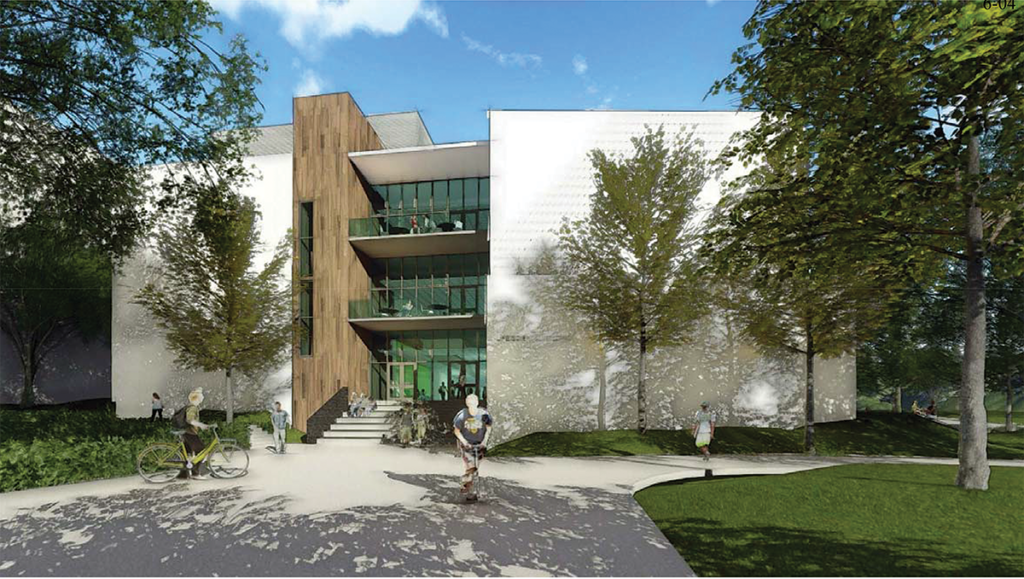Bringing 21st Century Changes
The future landscape of university research is evolving. In that future, increasingly complex problems faced by the nation and the world will be resolved primarily by multi-disciplinary teams of researchers. Some will involve collaboration with other universities and institutions, while others will be formed between schools, colleges and departments within the universities themselves.
To help better position its faculty for the 21st century and to enhance the necessary interdisciplinary collaboration, the University of Hawai‘i (UH) has plans well underway for a new $50 million, 45,000-square-foot, state-of-the-art Life Sciences Building to be built on its flagship campus at the University of Hawai‘i at Mānoa (UH Mānoa). It will house teaching and research laboratories, laboratory support and office spaces. Estimated completion date of the new building is fall 2019.
“The Life Sciences Building will provide open, flexible, modular, high-density lab spaces ideally suited for collaborative, multidisciplinary research—a critical need that is not being met by our current biological science facilities,” said UH Mānoa Vice Chancellor for Research Michael Bruno. “The new space will enable us to ensure that our world class faculty and students have the state of the art facilities they require to conduct leading edge and impactful research on many of society’s most pressing problems.”
In addition to modern research and instructional space, the cutting-edge facility will serve as a new home for the biology, microbiology and botany departments under the UH Mānoa’s College of Natural Sciences. Joining those units will be the School of Ocean and Earth Science and Technology’s Pacific Biosciences Research Center (PBRC) and its Biological Electron Microscope Facility— which operates the state’s only transmission electron microscope and services 60 UH Mānoa labs.
“The future of biology and for university research in general will be about breaking down the boundaries and silos of individual departments to enable engagement in more collaborative efforts,” said PBRC Director Margaret McFall-Ngai, who is leading a multi-discipline team of UH researchers on the study of microbiomes.
To make room for the new Life Sciences Building, one of the oldest buildings on campus and former home of the UH Mānoa School of Social Work, Henke Hall, will be demolished over the summer. As part of the same project, the aged Snyder Hall, which has housed microbiology, biology and PBRC, will also be razed. The move is expected to eliminate $19 million from UH Mānoa’s deferred maintenance backlog.
Representing one of the most significant capital projects in the past 10 years, the new Life Sciences building will also have the distinction of being UH’s first design-build project. “Design-build” is an integrated delivery process that maintains a single contractor and contract for both the design and construction with a fixed, upfront cost. As a result, design-build projects are more likely to be completed on time and result in fewer cost overruns as compared to the typical design-bid-build process. “The Life Sciences Building project represents a different approach to the way UH has been undertaking major capital improvement projects,” said UH President David Lassner. “Through design-build, we are now able to quickly and efficiently deliver a 21st century facility that supports multi-disciplinary research that will enable UH students, faculty and staff to improve on their current successes and to flourish in their future endeavors.”

